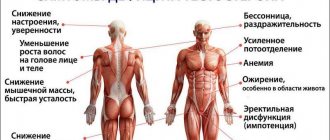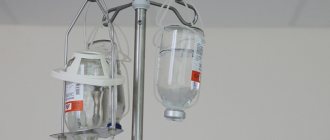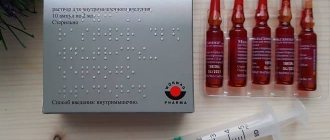Immunobiological medicinal products (IMPs) are medicinal products intended for:
- formation of active or passive immunity
- diagnosis of immunity
- diagnosis of specific acquired changes in the immunological response to allergenic substances.
Simply put, ILPs are vaccines, toxoids, toxins, serums, immunoglobulins and allergens.
Most pharmacies working with ILP are pharmacies at medical institutions that provide vaccination to the population. This is due to the fact that immunization of the population against a number of infections is free for all citizens. The share of commercial pharmacies selling IMPs is small; as a rule, these are large chains that are ready to offer an imported alternative to domestic vaccines; a vaccine not included in the vaccination schedule, or a specific ILP at the buyer’s request. It may be unprofitable for small chains and single pharmacies to engage in ILP, since the share of ILP in the assortment is negligible, the demand is small, and there are a lot of requirements and costs for organizing the work.
Gentle ILP
IMPs occupy a special place in the group of thermolabile drugs (MDs), since they require particularly strict adherence to temperature conditions. All ILPs lose their activity over time, and under unfavorable temperature conditions this happens very quickly. An increase or decrease in temperature leads to a partial or complete loss of vaccine immunogenic activity, which is not restored when it is returned to the recommended temperature regime, i.e. loss of activity is irreversible. Therefore, proper storage and transportation of vaccines is vital to maintain their potency until they are administered to the body. All vaccines lose their potency when stored at elevated temperatures, however, their sensitivity to temperature varies. The most thermosensitive are polio, measles, pertussis (acellular), mumps, DPT, ADS, ADS-M, BCG, and hepatitis B vaccine. Tetanus toxoid (AT) is less sensitive to increased temperature. Vaccines also differ in their sensitivity to low temperatures: some can withstand freezing without loss of activity (BCG, polio, measles, mumps vaccines), others are destroyed by freezing (DTP, ADS, ADS-M, AC, hepatitis B vaccine). The slightest violations when working with them can render the drug unusable and even cause harm to health if used. Failure to comply with the rules and conditions for storing vaccines can lead to the development of post-vaccination complications. These can be both local and systemic reactions of the body.
Definition
What is a cold chain? This is a continuously functioning system of organizational and practical measures that ensures optimal temperature during storage and transportation of immunobiological medications (including those used for immunoprophylaxis) at every stage of their journey from the manufacturing plant to the person for whom vaccination is indicated.
The legislative framework
Work with IMP is regulated by a separate document: Sanitary and Epidemiological Rules SP 3.3.2.3332-16 “Conditions for transportation and storage of immunobiological medicinal products.” In the article, we have selected for you from SanPin all the rules relating to ILP. This is the main document, but not the only one. The general rules that are contained in the orders of the Ministry of Health “On approval of the rules for storing medicines” No. 706n, “On approval of the rules of good practice for the storage and transportation of medicines for medical use” No. 646n are also applicable to the storage of medical products. Some of the requirements for the storage of pharmaceutical products are contained in GF XIV in the general pharmacopoeial article “Storage of medicines”.
Cold chain system
Within the cold chain, the following elements of the cold chain system can be distinguished:
- isothermal vehicles. This should include all vehicles (road, rail, container, sea, river, air) that ensure compliance with the required temperature conditions during the transportation of thermolabile drugs. Also included in this group are various thermal containers and medical cooler bags.
- stationary refrigerators. This includes all types of refrigerators used in storing medicines: production, storage, reloading, distribution, sales. This group in the cold chain system also includes: refrigeration rooms (chambers) and freezers.
- auxiliary equipment. This equipment is designed to control temperature conditions, ensure the operation of refrigeration equipment and vehicles: temperature indicators, temperature recorders, thermographs, thermometers, etc.
“Cold chain” – what is it?
The concept of the cold chain was developed in the early 1980s when WHO was implementing the Expanded Program on Immunization in developing countries with hot climates. “Cold chain” is a set of continuous measures to ensure the quality and safety of medical products along the entire route from the manufacturer to the final consumer (patient). “Cold chain” is the most important condition for handling ILP. If at least one link is unreliable even according to one of the criteria, any other efforts become meaningless. If at least part of the chain is not controlled, there is no control in the entire chain.
The “cold chain” consists of 4 levels, which can be represented in the form of a diagram:
Pharmacies, as we see, are on the third level. The organization and provision of requirements for compliance with the “cold chain” lies with the head of the pharmacy organization. The head of the pharmacy approves by order the persons responsible for the “cold chain”. Specialists of a pharmacy organization involved in the sale of pharmaceutical products undergo annual training on how to work with this group of drugs.
Where to study
The organization of personnel training falls on the shoulders of the head of the organization participating in the “cold chain”. You can resort to the help of third-party educational institutions that have a license for educational activities in this area.
Our training center provides the necessary types of training on the conditions of transportation and storage of industrial products. We offer two programs that are designed in strict accordance with existing legal requirements: the first is aimed at drivers of vehicles transporting drugs, the second - at all cold chain employees.
Students who successfully complete the training are issued a certificate of advanced training in the established form.
At what temperature are ILPs stored in a pharmacy?
ILP should be stored in accordance with the regimen specified in the instructions for use. For most, this is +2°C to +8°C inclusive. It is prohibited to freeze adsorbed preparations containing adjuvants (pertussis-diphtheria-tetanus vaccine, diphtheria-tetanus toxoid, hepatitis B and A vaccines, subunit influenza vaccines, inactivated polio vaccine), as well as vaccine solvents. As you can see, the temperature regime corresponds to a “cold place”, but the requirements for ensuring it for ILP are much stricter than for other thermolabile drugs.
Temperature conditions for transportation and storage
Regimes for immunobiological preparations
BCG (tuberculosis vaccines) and other non-adsorbed and adsorbed vaccines should be stored at ± 8 °C. Live vaccines that require frozen storage according to the instructions for use should be stored in a freezer at -20°C. For these medications, a temporary temperature increase of up to 0±8°C during transportation is allowed - no more than 48 hours.
In the process of transporting medicines, thermal containers are used - sealed containers made of polyurethane or polystyrene. This ensures temperature preservation for two days at outside temperatures up to +43°C.
Modes for food:
Temperature requirements for food products are even more complex due to the fact that they vary depending on the type of food. For example, the required temperature for storing and transporting vegetables is 0-4°C, for fruits and berries - on average from +2 to +5°C. At the same time, fruits such as bananas must be transported already at +13°C. Chilled meat and poultry require from -6 to +4°C, eggs +1-2°C. Transportation of frozen goods is carried out at temperatures from -6 to -17°C. Deep-frozen products, such as frozen fish, are transported at -18°C and below.
During transportation, ventilation and humidity of the cargo area are also important. The air should not stagnate so that condensation does not settle on the products, which triggers the processes of rotting of the products.
For a cold chain, one of the key factors is the time spent on logistics. Delivery times for perishable goods are much more limited compared to other goods.
Equipment for storing medical products
At the first, second and third levels of the “cold chain”, refrigerated chambers (rooms) are used for unpacking, storing, packing and preparing IMP for further transportation. As a rule, pharmacies engaged in retail dispensing to the public do not have such cameras. In this case, special “cold chain” refrigerators are used to store ILP, capable of maintaining the temperature for at least 24 hours in the event of a power outage. Such refrigerators have stable temperature conditions and clearly maintain temperatures from +2ºС to +8 ºС. Refrigerators must have reversible doors without shelves, a built-in thermometer with a display for visual temperature control, and an audible temperature alarm.
An acceptable option is when the pharmacy, even before the release of SanPin, used and still uses a pharmaceutical or household refrigerator for storing medical products. Pharmacies replace such equipment with refrigerators for the “cold chain” as planned, or when outdated equipment fails.
In the pharmacy premises where refrigerators for medical products are located, the temperature should be maintained no higher than +20 ºС.
09/07/2016 Requirements for organizing a cold chain
Conditions for transportation and storage of immunobiological drugs are an important task provided by medical institutions at all levels.
In 2021, sanitary rules No. 3.3.2.3332-16 (SP cold chain 2016) came into force, which detail the conditions for the movement and storage of immunobiological medicinal products. This is, of course, an important document in the complex of activities that are commonly called “Cold Chain”.
In the article we will look at some of the requirements of the new document regarding the organization of storage of drugs, we will talk in general about what a cold chain is and at what levels it is carried out.
Cold chain compliance
In accordance with the new sanitary rules, the cold chain is understood as a set of measures, organizational and practically implemented, aimed at ensuring optimal temperature during the storage and transportation of immunobiological preparations. Measures must be taken at all stages of the movement of drugs: from their manufacture at a pharmaceutical plant to the delivery of the vaccine to a specific patient.
The cold chain is recognized as the most important condition for organizing the prevention of infectious diseases.
Cold chain monitoring
Such a strictly regulated control system is important because all currently created vaccine preparations retain their properties only at a certain temperature, this applies to their storage and movement. If during these processes the temperature is not optimal, the drugs will completely or partially lose their immunogenic properties, which directly affects the effectiveness of such a vaccine in the prevention of infectious diseases.
All drugs are sensitive biological substances, and once the vaccine loses its activity, returning to normal temperature conditions, it will not be able to recover.
Therefore, cold chain control at all stages of the supply and storage of the vaccine is a necessary condition for preserving all the beneficial and preventive characteristics of the drugs.
Cold chain conditions
The cold chain system traditionally has 4 levels:
- manufacturer of the medicinal product (vaccine);
- regional warehouses of pharmacy chains and organizations in which temporary storage of immunobiological drugs is carried out;
- at the third level, drugs are moved from regional, district and local pharmacy warehouses to medical institutions that will administer vaccines;
- at the fourth level, the medical institutions to which they were received remain responsible for organizing the storage of vaccines.
Since the main characteristics of cold chain compliance are its uninterruptedness and strict adherence, the following components must be present at each level:
- healthcare workers, maintenance and other personnel who are trained in cold chain procedures and ensure the correct use of refrigeration equipment, movement and use of vaccines;
- special refrigeration equipment of various types in which drugs will be stored and transported under proper temperature conditions;
- specialized equipment that is designed to record and control the temperature regime in the refrigeration unit, as well as to monitor violations and deviations from the recommended temperature regime at all stages of drug transportation.
Some requirements are also set by the World Health Organization, which recommends monitoring violations of transportation and storage temperature conditions for each package of the drug.
Requirements for equipment in the cold chain system
The 2021 Cold Chain JV adopted has become an expected and timely document, in which the requirements for the organization of the cold chain and for the equipment in this system have been significantly tightened. Thus, new requirements have become to demonstrate the ability of refrigeration units to provide a given temperature regime in normal and emergency situations.
In the new edition of the sanitary rules, all requirements for refrigeration and other equipment are collected in a separate section, special attention is paid to compliance with temperature conditions when loading vaccine preparations into refrigerated trucks.
The table below demonstrates the requirements for equipping facilities for storing and transporting immunobiological medicinal products with specialized refrigeration equipment.
| temperature control equipment | equipment for transportation and storage of ILP | |||||
| Refrigerated truck | cooling chamber | Refrigeration room | fridge | thermal container | ||
| Large volume | Small volume | |||||
| temperature recorder | Basics | Basics | Basics | Additional | Additional or main | — |
| thermometer | — | Mandatory | Mandatory | Mandatory | Allowed | Allowed |
| temperature indicator | Additional | Additional | Additional | Basics | Basics | Basics |
- Data from temperature recorders must be read by personnel at certain intervals, in emergency situations and at least once a week.
- Indications should be monitored every 12 hours in equipment intended for storing immunobiological medicinal products.
- The readings on temperature indicators should be monitored each time when unloading and loading drugs.
- at the first three levels of the cold chain, temperature readings are monitored twice a day, at the last, fourth level - on weekdays, staff check them twice a day.
Ways to control temperature conditions
The Cold Chain system assumes that during transportation and storage of drugs, the temperature regime will be periodically monitored. There are two main ways to do this:
- Monitoring of temperature violations.
When monitoring, special temperature control devices - temperature indicators - must periodically measure the current temperature and compare it with the established norm.
Such a device does not record temperature; the recipient of immunobiological preparations, when unloading them, notes the result of the control - whether there were temperature violations or not.
- Registration of temperature readings.
In this case, during transport, the temperature is constantly measured and recorded during the transport of the drugs. The recipient of the drugs reviews the records to identify any violations.
New sanitary regulations state that both methods must be used simultaneously at the first level of the cold chain. The drug manufacturer must have access to information about the temperature conditions of the drugs from the moment they are quarantined until they are transferred to the recipient. Information may subsequently be transmitted electronically and in paper form.
The requirements regarding the use of means for measuring temperature are also strict.
- they must ensure constant monitoring of the temperature within the range from +2 to +8 ° C;
- the instrument error must be within 0.5°C;
- data is recorded with a time interval between measurements of no more than 1 minute;
- temperature indicators must also meet established requirements;
- all technical means for recording temperature in refrigerated vehicles must be in the form of portable or built-in electronic thermometers, which must be able to record single violations and store them in memory.
New equipment requirements for joint venture cold chain 2016
On our market today there is a fairly large selection of equipment that meets the tasks set in the sanitary rules. There are also Russian-made models.
There are combined models that combine the capabilities of a temperature recorder and a temperature indicator, when using which the recipient of the drugs can receive both a discrete result and a history of temperature records.
However, full implementation of the requirements established by the legislator will take time, since re-equipping equipment for transporting and storing immunobiological drugs requires additional financial costs.
The 2021 Cold Chain JV also paid attention to the requirements that relate to equipment intended for the transportation and storage of drugs.
Thus, refrigeration units with a high degree of reliability and having the following characteristics are suitable for the cold chain:
- they must have the function of maintaining normal temperature conditions inside the chamber;
- they should have reversible doors without shelves;
- Refrigerators must have built-in thermometers;
- display for visual control of temperature conditions;
- temperature alarm with sound signal;
Such requirements are very difficult to meet, especially at the last level of the cold chain.
Thus, it is difficult in practice to confirm the fact that refrigeration equipment can maintain the recommended temperature parameters in the chamber during the day, because We are talking about the qualification of a refrigeration device at the first level of movement and storage of vaccines in accordance with the requirements established by Order of the Ministry of Industry and Trade No. 916 of June 14, 2013. However, until now, the application of these rules was practiced only at the first level of the cold chain and did not apply to levels 3, 4 and 5.
It is also difficult to fulfill the requirements for equipping refrigeration chambers and rooms in terms of ensuring their functioning in the event of emergency situations, since at the moment there are no power supply schemes for backup circuits and in autonomous power supply systems at the stages of moving immunobiological preparations.
At the third and fourth levels of the chain, thermal containers are often used, the requirements for which have also changed.
For example, the list of mandatory equipment documents has expanded, to which the legislator added the presence of a thermal card issued by the manufacturer. Such a document is a guide to the location of indicators and allows you to assess the suitability of a thermal container for its use in transportation, especially in conditions of fluctuating external temperatures.
The temperature map is a paper confirmation of the accuracy of the distribution of the temperature field in the volume of the thermal container, regardless of the influence of external temperatures. The document also provides recommendations for the distribution of temperature control equipment in the form of special schedules.
The main problem in this regard is that not all equipment manufacturers are willing or able to provide such a temperature map. Also, this card can simulate the winter or summer season, and in order to use the container with the vaccine in other conditions, it is necessary to conduct additional research confirmed by a special evaluation protocol.
Some manufacturers of thermal containers are ready to meet the consumer halfway and can, at his request, develop their own temperature maps in accordance with the specification that describes the delivery conditions. They will take into account the operating conditions of the container in different seasons, type of delivery, take into account the specifics of packaging procedures, volume, weight, etc. Such studies are confirmed by qualification protocols.
In conclusion, I would like to note that the development and introduction of new sanitary rules made it possible to bring temperature control in the cold chain organization system to a qualitatively new level. This is the most important step in guaranteeing the safety of drugs at all stages of the cold chain, regardless of the conditions of transportation and storage.
At the same time, it should be noted that in order to practically implement all the requirements of the document, it is necessary to bring all other methodological recommendations and regulatory documents into conformity with this document. In addition, it is worth determining the specific time periods required for manufacturers, pharmacy chains and medical institutions in order to bring equipment intended for storing and moving immunobiological drugs into compliance with the requirements of the joint venture.
www.zdrav.ru
More rules for storing immunobiological drugs
- The pharmacist must load and unload thermal containers (cooler bags) within 10 minutes in the same room.
- Refrigeration equipment should not be filled to more than 2/3 of its volume.
- For uniform cooling, access to cooled air must be provided to each package of ILP in the refrigerator.
- It is not allowed to store other drugs and food products in refrigerators for medical laboratory use.
- It is not allowed to place the ILP on the door panel of the refrigerator (in the case of using domestic refrigerators).
- Inside the refrigerator, non-freezing materials and solvents are located away from the source of cold.
- Shelves for storing ILP must be marked, and the ILP themselves must be identified using rack cards or codes (when maintaining electronic records).
- The duration of storage of IMP at the third level in pharmacies at medical institutions should not exceed three months, but pharmacies engaged in retail sale of IMP can store and sell IMP during the shelf life of the drug, but no later than seven days before its expiration.
- Each refrigerating chamber provides space for placing cold elements (at least 1/6 of the total volume of the refrigerating chamber), which serve as additional sources of cold when the power supply to the refrigerator is turned off.
- In the event of a power outage, at any time of the day it should be possible to switch refrigerators to an autonomous power supply network (we are not aware of any real examples of this requirement being met in private pharmacies).
- General cleaning of refrigerators is carried out at least once a month, routine cleaning is carried out as needed.
- General cleaning of the refrigerator involves disconnecting the power supply, washing and treating internal and external surfaces with disinfectants. It must be carried out in such a way that the IMP storage regime is not violated. In this case, the manager must develop step-by-step instructions for pharmacists.
Thermal container and cold element
This equipment is a box made of special thermal insulating material. It has a tight-fitting lid made of the same material. The sizes of thermal containers can be different. Their inner surface must be covered with a layer that allows sanitary treatment. The required temperature regime inside the container is provided by cold elements. These are hermetically sealed containers that are filled with water or a special solution. It is frozen for 24 hours before being placed in a container. If the cold element defrosts, it must be replaced with another in a special warehouse.
Temperature Control Equipment
In addition to the built-in thermometer, the refrigerator is equipped with two autonomous thermometers and two temperature indicators (and, possibly, two temperature recorders). Autonomous thermometers paired with a temperature indicator (thermal recorder) are placed (1) at the “coldest” point, subject to probable freezing, but not closer than 10 cm to the cold source, and (2) at the “warmest” (farthest from the cold source) points refrigeration equipment.
Thermal indicators are the main means of temperature control, i.e. their presence in the refrigerator for ILP is mandatory. Thermal indicators serve to clearly establish and display the fact and duration of a violation (or absence thereof) of the temperature regime. Each temperature indicator has the ability to visually indicate/alarm about temperature violations. In addition, each temperature indicator has its own identification number, which makes it impossible to falsify its readings.
Temperature recorders are an additional tool. They continuously measure temperature and store temperature data in the device’s memory, which can be downloaded and analyzed. There are temperature indicators with a temperature recording function, which, of course, is very convenient.
Monitoring of thermometers and temperature indicators
The official responsible for ensuring the “cold chain” in the pharmacy monitors the readings of each thermometer and temperature indicator twice a day (at the beginning and end of the working day) and records the readings of each autonomous thermometer and temperature indicator indicating its personalized number in a special temperature monitoring log . The log is kept separately for each unit of refrigeration equipment (Appendix No. 2 to these Rules).
As necessary, but at least once a week, or in the event of an emergency, the responsible pharmacist reads information from temperature recorders, creates an electronic copy and prints the data on paper; the information is stored for one year. All temperature measuring instruments must undergo timely verification in accordance with the schedule. Documents confirming the verification are kept by the official responsible for the “cold chain”.
Construction of a cold chain in Russia and abroad
The European logistics market has already passed the main stages of development, and today it can be called mature. Many processes that are just being introduced in our country have been successfully implemented in Europe for decades. This is due to the fact that the chilled food market in Russia is still slightly behind European indicators and healthy food products, such as chilled food, fresh vegetables and herbs, have only become popular in the last few years. Experts assess the growth potential of this segment as high, but it is quite difficult to accurately predict where the market will go due to the unstable economic situation. It is worth noting that, for example, to transport perishable food products in Russia, it is necessary to obtain an ATP certificate - a special document certifying the vehicle’s compliance with ATP standards for the transportation of perishable products. In Europe, such a requirement appears only for international transport. For the transport of pharmaceutical products, legal regulations apply in both Europe and the United States.
Equipment for transporting medical products
According to the clarification Letter of the Ministry of Health dated September 27, 2017, the release of medical supplies during retail sales is permitted only if the buyer delivers the medical supplies to the clinic in a thermal container or thermos or in “another device” in compliance with the “cold chain” conditions. You can release the ILP into the buyer’s own equipment (thermal container or cooler bag), but often people come without it. Therefore, it is reasonable to always have the required number of cold packs and thermal bags/thermal containers on sale.
Pharmacy organizations selling medical products to the fourth level are responsible for their transportation. For this purpose, thermal containers of different capacities are used. The pharmacy must have a supply of thermal containers, cold elements and thermal indicators (thermal recorders) for transportation. For reusable thermal containers, a double supply of cold elements is required: one is used, the other is frozen.
ILP during emergencies
Regarding ILP, a separate section in SP 3.3.2.3332-16 stipulates that the pharmacy must be prepared for all possible emergency situations (ES) in a given organization, region, or locality. To do this, the manager develops and approves an emergency action plan to ensure a “cold chain” during an emergency. The plan must be clear, specific, indicating the procedure for each official, the necessary telephone numbers, diagrams, calculating the required supply of thermal containers, temperature indicators (temperature recorders), frozen refrigeration elements, etc.
Periodically, but at least once a year, the pharmacy manager conducts exercises in which all specialists are involved and analyzes the performance of all equipment. Based on the results of the exercise, appropriate adjustments are made to the cold chain maintenance plan if necessary.
Other publications about the conditions and rules for storing drugs in pharmacies:
Rules for storing prescriptions in a pharmacy
Storage of thermolabile drugs: refrigerators and thermometers
Storing medications in a pharmacy: temperature and humidity
Temperature and humidity in a pharmacy + sample logbook
You can discuss the latest news with all your Russian colleagues in chats:
- Telegram: https://tglink.ru/pharmorden
- VKontakte: https://vk.me/join/AJQ1d_D2XxaDy9IdzL0e6EqH
To leave a comment on this article, you need to register or log in
Interested in the article? You can find out even more in the section Working in a pharmacy
Interested in the article? You can find out even more in the section Working in a pharmacy
Cold chain levels
It is necessary to distinguish between cold chain levels and cold chain elements. Cold chain levels refer to individual completed stages of the movement of medicinal products from manufacturer to consumer. There are four levels of the cold chain:
- the first level of the cold chain: from the pharmaceutical manufacturer to pharmaceutical warehouses in the constituent entities of the Russian Federation;
- the second level of the cold chain: from pharmacy warehouses and warehouses of State Sanitary and Epidemiological Supervision centers in the constituent entities of the Russian Federation to city and regional (urban and rural) pharmacy warehouses, as well as warehouses of healthcare organizations;
- third level of the cold chain: from city and regional (urban and rural) pharmacy warehouses to treatment and preventive organizations (clinics, hospitals, outpatient clinics, etc.);
- fourth level of the cold chain: inside medical and preventive organizations (clinics, hospitals, outpatient clinics, etc.).
According to statistics, most of the violations of the temperature regime for storing medicines occur at the fourth level of the cold chain.




